While hibiscus are cherished for their stunning summer flowering with exotic flair, their flowers hold even more advantages. They are used in cooking to enhance dishes, make herbal teas and in the recipe for the famous bissap juice, a highly appreciated beverage widely consumed in Africa.
They also possess numerous medicinal virtues, believed to have been exploited since antiquity.
Here are our tips for properly drying hibiscus flowers: selecting flowers, easy drying methods, storage and usage.
Edible hibiscus varieties
The hibiscus typically used in cooking and with the most flavour is the sabdariffa species. Traditionally, it is this hibiscus originating from West Africa and known as bissap (or Guinea sorrel) that is used to make the namesake drink.
Very sensitive to cold, it cannot tolerate freezing temperatures and must necessarily be grown in pots in our latitudes, to allow overwintering under shelter.
The flowers of other hibiscus species, such as syriacus or rosa-sinensis, are also edible. However, they are less flavourful, which is why their use is rather reserved for therapeutic purposes.
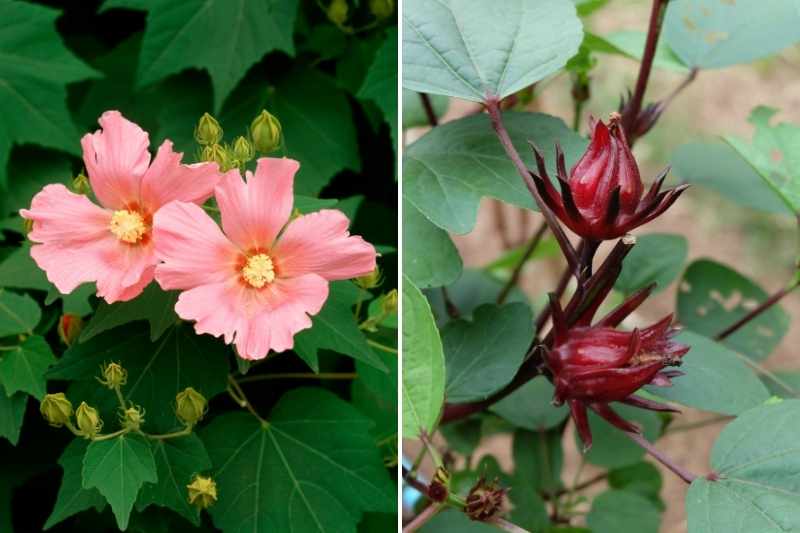
Hibiscus sabdariffa
Picking hibiscus flowers for drying: which parts to harvest?
Hibiscus generally flowers from July to October. This is therefore the period when the flowers should be harvested. Two parts of the hibiscus flower can be dried: the petals and the fruit.
The flowers have the particularity of being ephemeral: their lifespan is very short, averaging one day. The harvest should therefore be done quite early after blooming, ideally in the morning after the dew has evaporated, on a dry and sunny day.
When the flower falls after wilting, only a bright red fruit remains on the stem, 15 to 20 mm in diameter: the calyx. Traditionally, it is this part of the plant, much more flavourful than the petals, that is used to make bissap.
When the calyx is ready to be harvested, it detaches easily from the pedicel (flower stem).
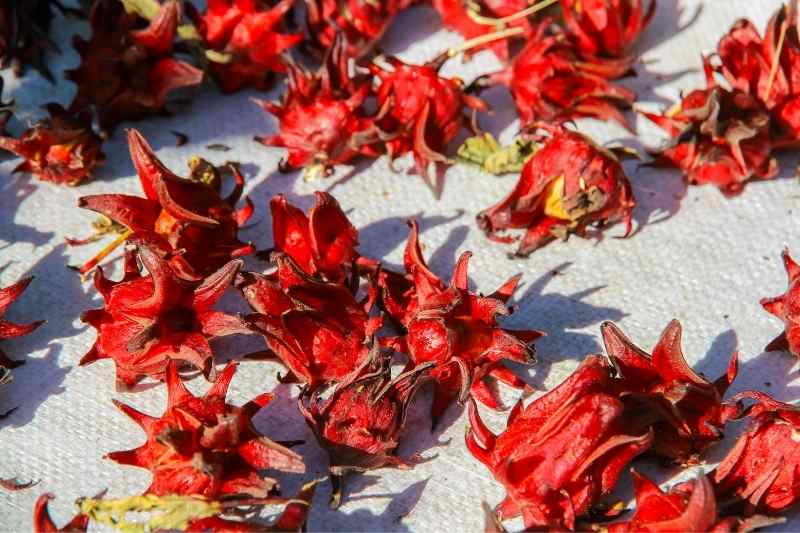
How to dry hibiscus flowers?
Drying the petals
Washing with water risks damaging the flowers and making drying more difficult. Once the flowers are gathered, simply place them for a few minutes on a flat surface, covered with a cloth. The absence of light will drive away any small insects nestled in the flowers.
- Gently detach the petals.
- Arrange them on a baking tray, taking care not to overlap them.
- Dry in the oven at 50°C (or the lowest possible temperature) for a few minutes.
A dehydrator or solar dryer can also be used.
Once dried, the petals can be ground into powder, using a mortar or food processor, or kept whole.
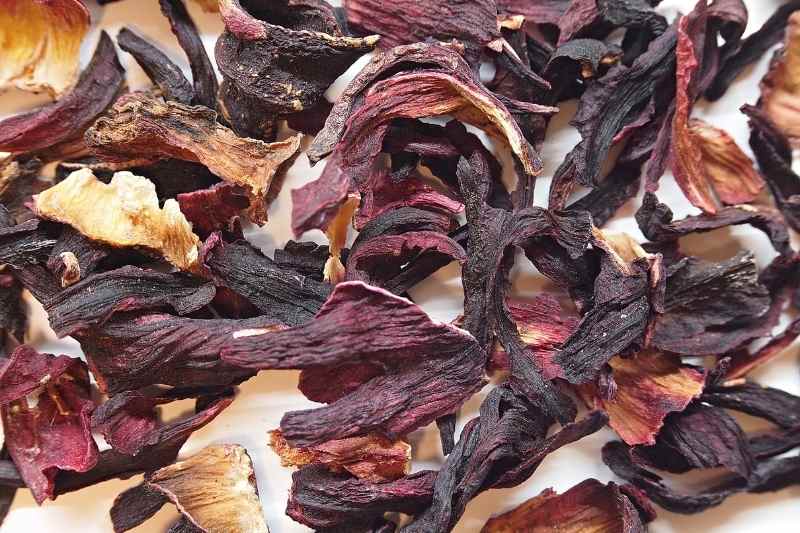
Drying Hibiscus petals
Drying the fruit
Drying the calyx is longer and slightly more delicate, as the fruits are fleshy. The main challenge is to succeed in drying before the fruit rots, which is why the sun-drying method on racks is better suited to regions with very hot and dry summers (or during heatwaves).
Drying can be done in a conventional oven, at low temperature for a few hours or in a dehydrator.
Once dry, the fruit becomes hard and brittle, ready for storage.
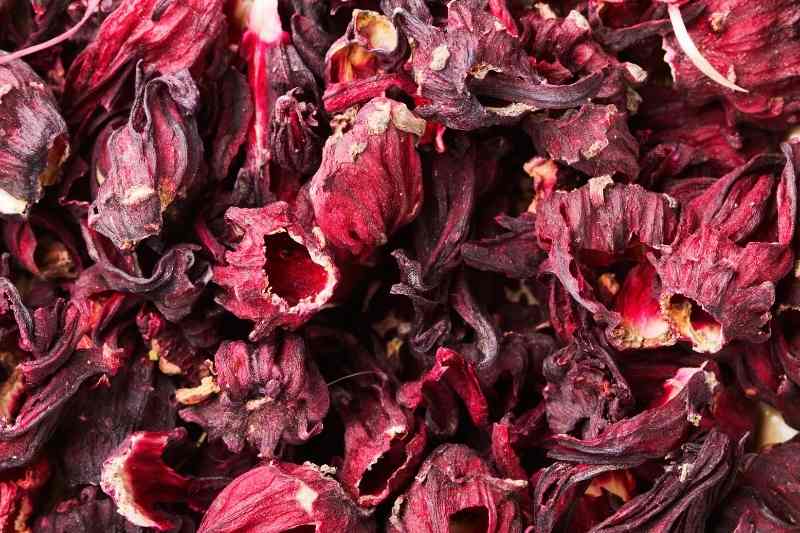
Drying Hibiscus calyxes
How to store dried hibiscus flowers?
Once dried, hibiscus petals and calyxes can be stored for several months at room temperature, in a dry place away from light.
Hibiscus flowers should be stored in an airtight container, a well-sealed paper bag or a ziplock bag, to preserve all their flavours.
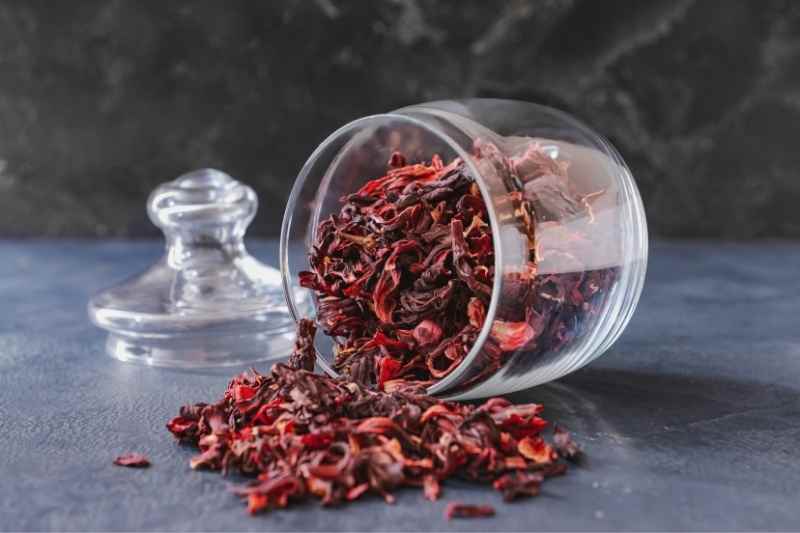
Using dried hibiscus flowers
Hibiscus flowers can be used in many ways in cooking, in both savoury and sweet versions: sauces, jams, syrups, herbal teas, tarts, desserts, cocktails, etc.
Dried petals are also perfect for embellishing dishes and salads or creating a lovely table decoration.
Hibiscus flower tea
Hibiscus flower tea is as simple to prepare as it is delicious, offering a balance between tangy, floral and fruity flavours.
- Place a teaspoon of petals in a cup of boiling water.
- Let steep for 5 minutes.
- Strain to remove the discoloured petals.
This infusion can be drunk hot or cold, 3 to 4 times a day.
To attenuate the tangy taste, you can add other plants, raspberry leaves, cinnamon, ginger or even small pieces of strawberry.
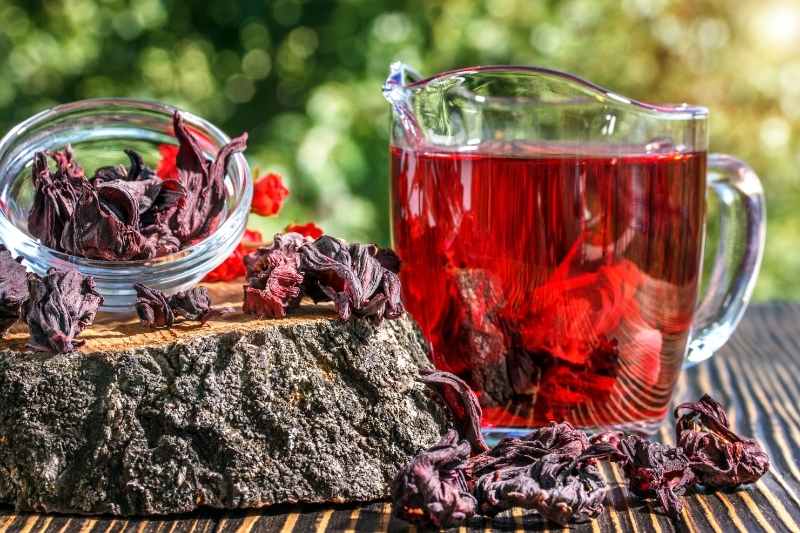
Dried Hibiscus tea is called Karkade in Egypt
Bissap juice recipe
Bissap is a red drink with a fruity taste, best enjoyed cold for a truly refreshing effect.
Ingredients for 1L of drink:
- 200g dried hibiscus flowers
- 125g sugar
- 1 packet vanilla sugar
In some African countries, bissap is additionally flavoured with mint leaves.
- Bring 1L of water to the boil.
- Add the dried calyxes and let simmer for about twenty minutes. The water will then turn purple or garnet.
- Let cool before straining.
- Add the sugar, then mix well.
- Pour into a previously cleaned bottle and keep refrigerated.
Enjoy at any time of day.
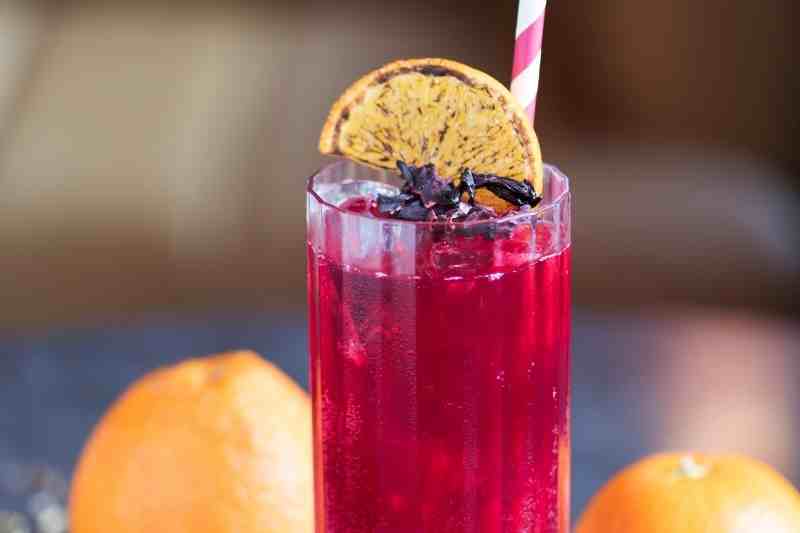
The benefits of hibiscus flowers
Hibiscus is rich in vitamin C, antioxidants and minerals, giving it many virtues:
- remineralising
- tonic
- diuretic
- sedative, relaxing
- mild laxative
- anti-inflammatory
Hibiscus flowers are believed to have beneficial effects for digestive issues, blood pressure, cardiovascular diseases, kidney stones, urinary infections, menstrual pain or water retention.
The petals are mainly used for their mucilage: their emollient properties (which relax tissues) help soothe the throat in case of cough or sore throat.































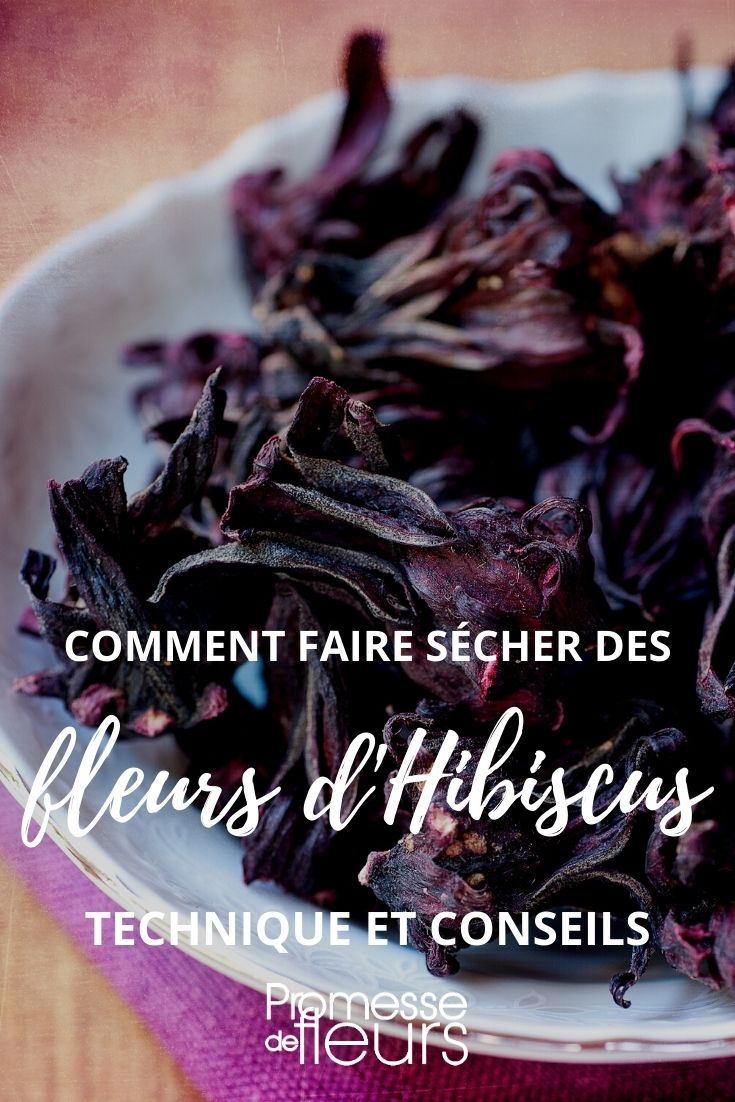
Comments